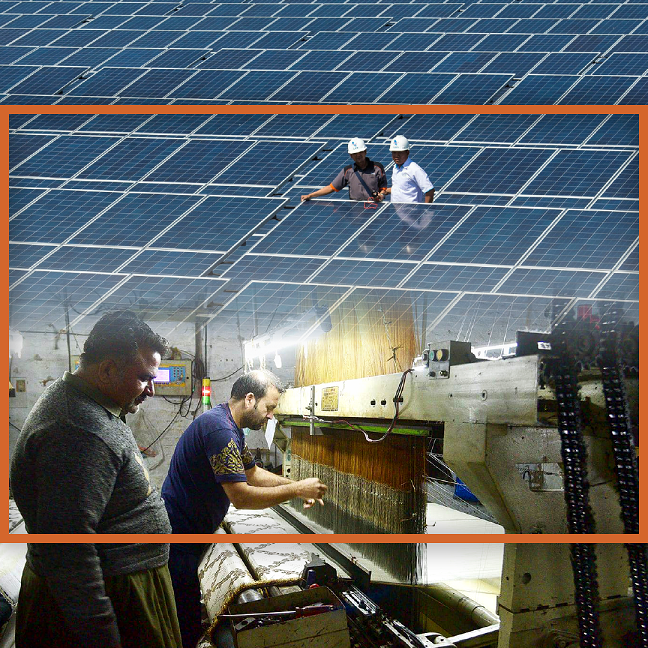The energy crisis has badly affected the textile industry in Pakistan. Every large factory has power plants in the cities like Lahore, Faisalabad and Sialkot. However, small and medium-scale factories are severely affected by the shortage of electricity and continuous increases in electricity tariff.
Malik Shehzad Baig has a textile mill in Khurrianwala near Faisalabad. According to him, 10 to 12 hours of loadshedding forced him to use petrol-powered generators in his factory, which cost him a lot. Hence, he coped with this issue by shifting his factory to solar three years ago.
Speaking to Lok Sujag, he says his initial setup was a 200kW solar energy project whose capacity has reached one megawatt after expansion in two to three phases.
Today, his factory, Shehzad Enterprises, is obtaining 4,000 units of electricity from solar panels daily which makes 120,000 units per month and about 1440,000 units annually.
It saves him Rs5.4m per month in terms of bills whereas it also covers the cost of installing a one-megawatt solar energy unit.
“I wish to shift my whole factory to solar energy but there is no more room on the roof,” says Shehzad.
Solar energy is not only saving the extra cost of generators, loadshedding and high electricity bills but it’s also environment friendly.
Pakistan Textile Exporters Association Secretary General Azizullah Gohar says the energy tariff delivered to the textile industry has increased by more than 100pc for almost a decade. This is the reason why Pakistan’s industry is far behind other Asian countries.
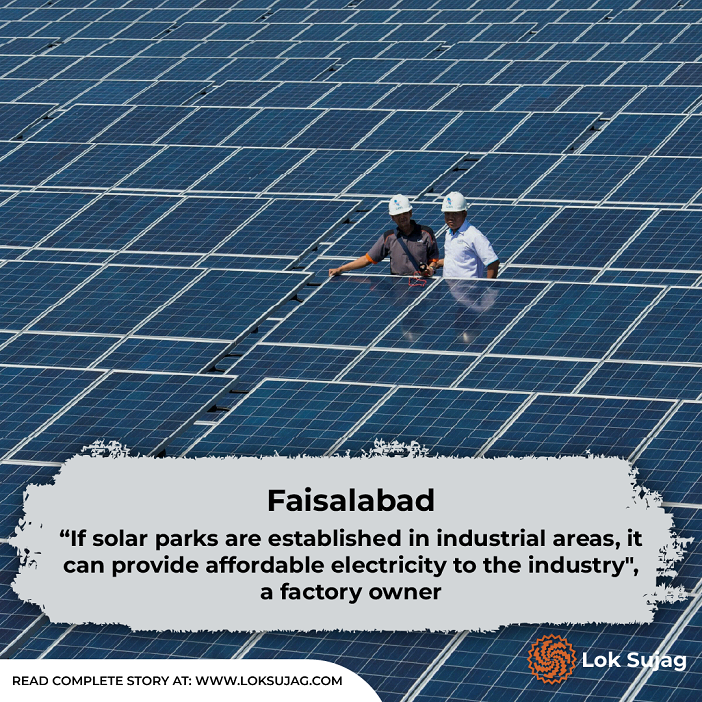
“In other countries of the world, including India, Bangladesh and Sri Lanka, electricity rates do not exceed seven cents while it is 15 cents in Pakistan.”
Gohar says the markup rate of Pakistani industries falls between 22 to 25 percent which is much higher than the rest of the world.
These circumstances imply that there is only one option of switching to solar energy to relieve the production cost. However, setting up a large-scale solar energy project demands a considerable cost that prevents small or medium-sized textile mill owners from switching to it.
Azizullah Gohar has suggested that instead of setting up new power generation projects, the government should provide loans to industrial, commercial, and domestic consumers on flexible terms to switch to solar energy. This will result in reducing the electricity costs as well as environmental pollution, he says.
“Pakistan is building its largest industrial estate in Faisalabad. Similarly, there are many industries in Khurrianwala as well. If solar parks are built in these areas, the provision of low-cost electricity to the industry can be made possible,” he suggests.
He informs that about 10 to 15PC textile industry in Faisalabad has partially shifted to solar energy.
“Solar energy is widely used in stitching units, offices, and other sectors where power consumption is low. However, the industry still relies on grid power to run large heavy-load machines,” says Gohar.
According to the Faisalabad Master Plan 2021-41, the share of the textile sector in Pakistan’s total exports is close to 70pc, which is 68pc of the total exports. The share of Faisalabad’s textile industry in textile exports is more than 45pc.
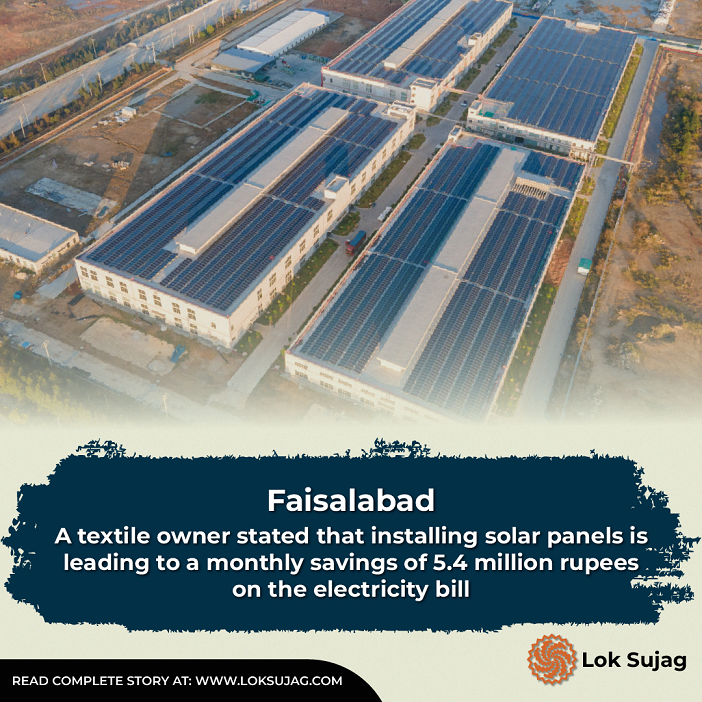
According to the research conducted by Hyder Ali, a PhD scholar at Pakistan Institute of Development Economics Islamabad, on 125 textile mills in Faisalabad, the disruption in power supply has caused the production rate to decline by 23 to 65pc in an eight-hour shift where a 10-hour shift results in a productivity loss of 21 to 60pc.
However, the use of solar energy in the textile industry has increased rapidly over the past few years to combat the energy crisis due to the endless increase in the prices of petroleum products, gas, and electricity.
According to the National Electric Power Regulatory Authority (Nepra), Faisalabad Electric Supply Company (Fesco) received 50 applications for net metering for solar energy projects in various industrial establishments in January 2024.
Fesco has issued net metering licenses to 558 institutions during 2021-22. Together, they are generating 26.62MW of electricity from solar energy.
According to the report of the All Pakistan Textile Mills Association, the industry has recorded a decline of 37pc in the electricity volume acquired from the electricity distribution companies last year.
According to a report prepared jointly by the federal government and the World Bank in 2018, the overall electricity demand of the country can be met by installing solar panels in only 0.071 percent of its area.
According to this report, in the next 20 years, Pakistan can save fuel equivalent to $5bn and reduce greenhouse gas emissions by increasing the use of solar and wind energy by at least 30pc by 2030.
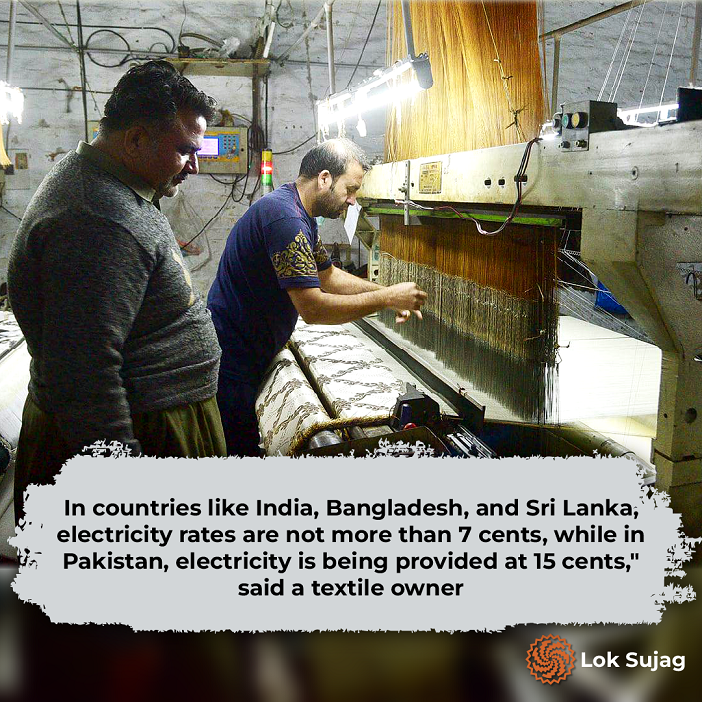
For this purpose, Pakistan needs to lodge about 24,000MW of solar and wind energy projects by 2030 while the total installed solar energy projects in Pakistan are currently limited to 1,500MW.
Faisalabad-based Pakistan Solar Association member Muhammad Shahid’s company, Slack Solars, has been providing services to industrial and commercial establishments as well as domestic consumers for the past 10 years.
Speaking to Lok Sujag, he says that initially, the demand for solar energy in Pakistan was very low but it has now boosted due to the rise in the petroleum products and electricity prices. However, the use of civil energy in the country is still less than its potential.
“Despite being the hub of the textile industry, only 5 to 10 percent of Faisalabad’s mills have shifted to solar energy.”
Currently, the decline in solar panels costs is letting more people switch to it.
Shahid adds that the solar panel’s price dropped to 30 to 40 rupees per watt a few weeks ago whereas it was 130 to 140 rupees last year. However, it has increased again to 50 to 55 rupees.
At present, every factory owner, business organisation and domestic user prioritises installing solar panels before the onset of the summer, which has led to the increasing demand for solar panels in the market.
“We have recently signed an agreement with a major textile exporter in Faisalabad to install an 8MW solar project. Out of these, the three-megawatt fibre unit, three-megawatt weaving unit, and two-megawatt project will be installed in the processing unit and it will be the largest solar energy project in Faisalabad history.”
Also Read
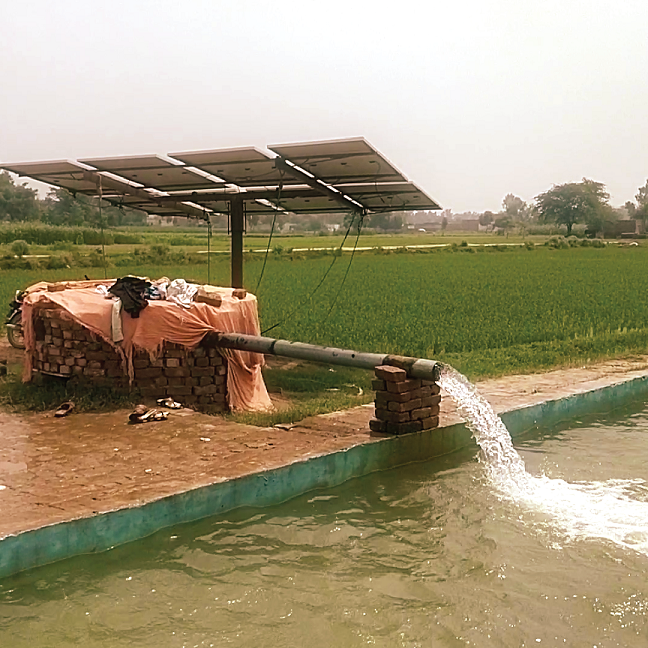
Why are farmers switching their tube wells to solar systems?
Shahid thinks that solar energy can be further promoted if the government eases the import of solar panels and green meter installation by Fesco.
Due to the expensive energy cost, raw materials, and labour cost in Pakistan, most of the solar panels are being imported from China.
Pakistan Solar Association President Amir Chaudhry says Pakistan’s solar energy demand has increased by almost 50pc during the last year.
“More than 7,000MW of solar panels were imported during the last five years, half of which occurred in the last year.”
The share of alternative and renewable energy in the country has increased to seven percent as of last year, up from less than one percent in 2014.
Shahid says that since 2016, the government has imposed a moratorium on the establishment of power projects running on imported fuel to promote the use of solar energy in the country.
Last year, the State Bank of Pakistan, with the help of the United Nations Green Climate Fund 2022, started supplying subsidised loans at a six percent markup to industrial establishments for installing solar panels.
This 54-million-dollar program targets reducing 848,000 tons of carbon dioxide.
This programme has issued a Rs74bn loan to 1,175 industrial enterprises for setting up solar energy projects ranging from 50 to 200 kilowatts.
Published on 13 Feb 2024
